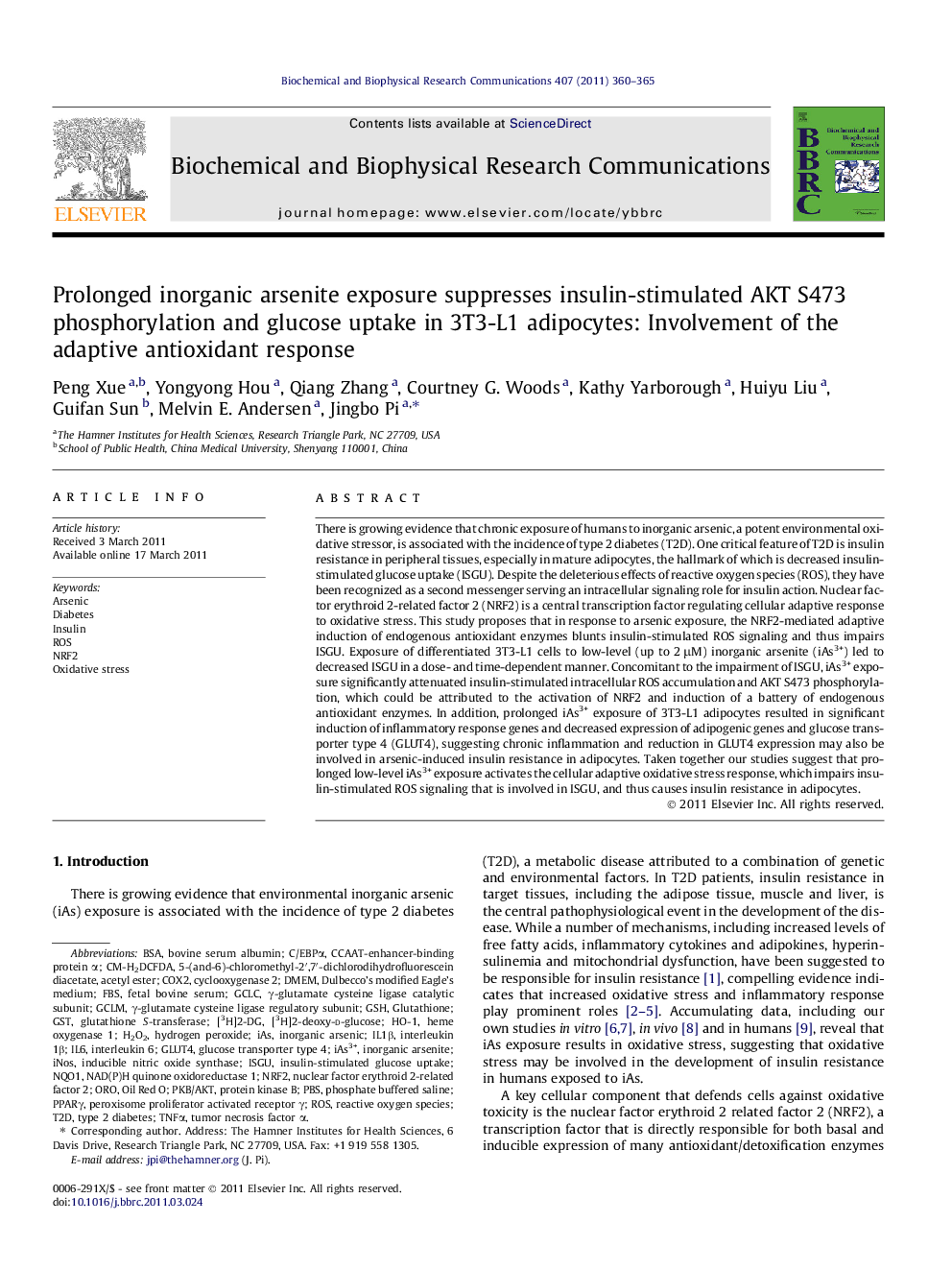| کد مقاله | کد نشریه | سال انتشار | مقاله انگلیسی | نسخه تمام متن |
|---|---|---|---|---|
| 1930822 | 1050531 | 2011 | 6 صفحه PDF | دانلود رایگان |

There is growing evidence that chronic exposure of humans to inorganic arsenic, a potent environmental oxidative stressor, is associated with the incidence of type 2 diabetes (T2D). One critical feature of T2D is insulin resistance in peripheral tissues, especially in mature adipocytes, the hallmark of which is decreased insulin-stimulated glucose uptake (ISGU). Despite the deleterious effects of reactive oxygen species (ROS), they have been recognized as a second messenger serving an intracellular signaling role for insulin action. Nuclear factor erythroid 2-related factor 2 (NRF2) is a central transcription factor regulating cellular adaptive response to oxidative stress. This study proposes that in response to arsenic exposure, the NRF2-mediated adaptive induction of endogenous antioxidant enzymes blunts insulin-stimulated ROS signaling and thus impairs ISGU. Exposure of differentiated 3T3-L1 cells to low-level (up to 2 μM) inorganic arsenite (iAs3+) led to decreased ISGU in a dose- and time-dependent manner. Concomitant to the impairment of ISGU, iAs3+ exposure significantly attenuated insulin-stimulated intracellular ROS accumulation and AKT S473 phosphorylation, which could be attributed to the activation of NRF2 and induction of a battery of endogenous antioxidant enzymes. In addition, prolonged iAs3+ exposure of 3T3-L1 adipocytes resulted in significant induction of inflammatory response genes and decreased expression of adipogenic genes and glucose transporter type 4 (GLUT4), suggesting chronic inflammation and reduction in GLUT4 expression may also be involved in arsenic-induced insulin resistance in adipocytes. Taken together our studies suggest that prolonged low-level iAs3+ exposure activates the cellular adaptive oxidative stress response, which impairs insulin-stimulated ROS signaling that is involved in ISGU, and thus causes insulin resistance in adipocytes.
► In 3T3-L1 adipocytes iAs3+ decreases insulin-stimulated glucose uptake.
► iAs3+ attenuates insulin-induced phosphorylation of AKT S473.
► iAs3+ activates the cellular adaptive oxidative stress response.
► iAs3+ impairs insulin-stimulated ROS signaling.
► iAs3+ decreases expression of adipogenic genes and GLUT4.
Journal: Biochemical and Biophysical Research Communications - Volume 407, Issue 2, 8 April 2011, Pages 360–365